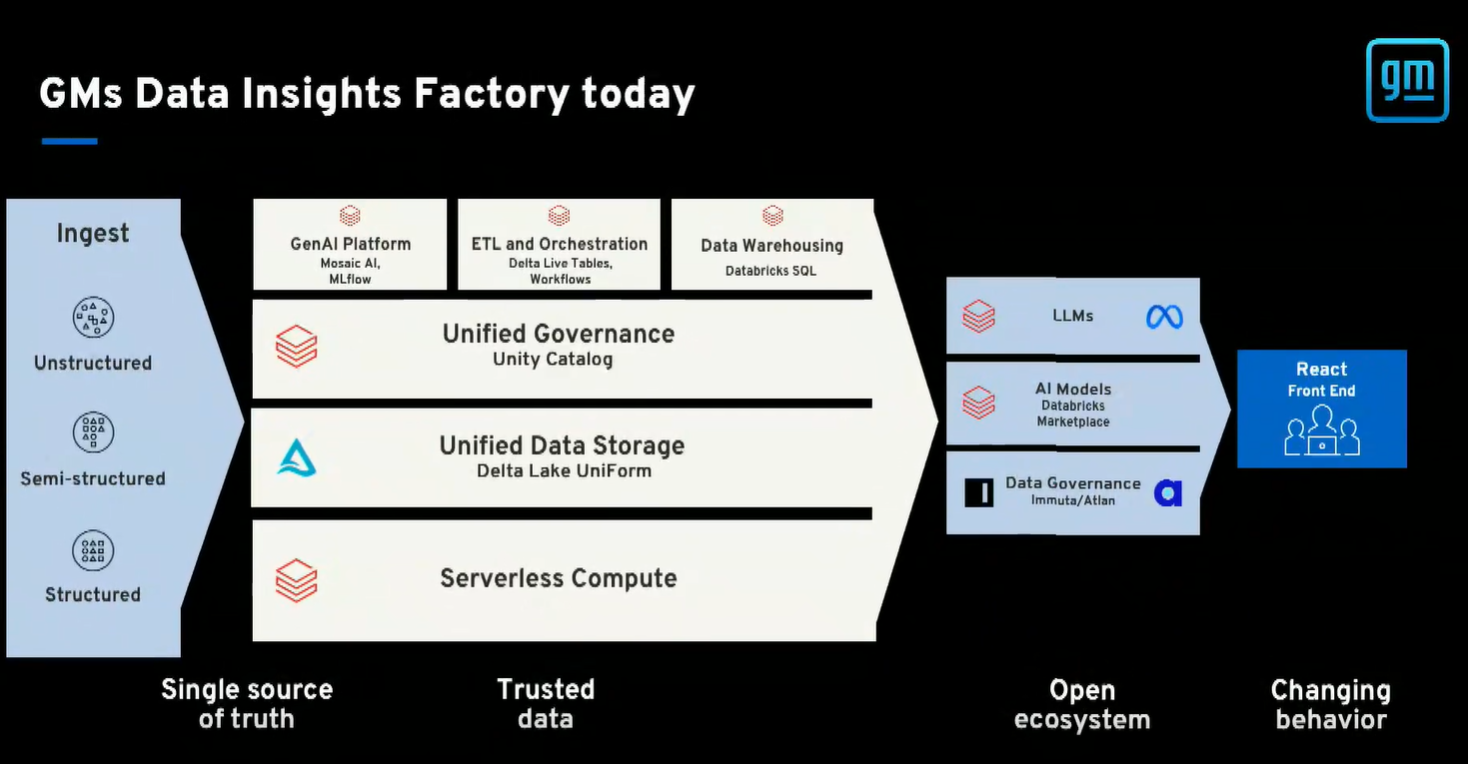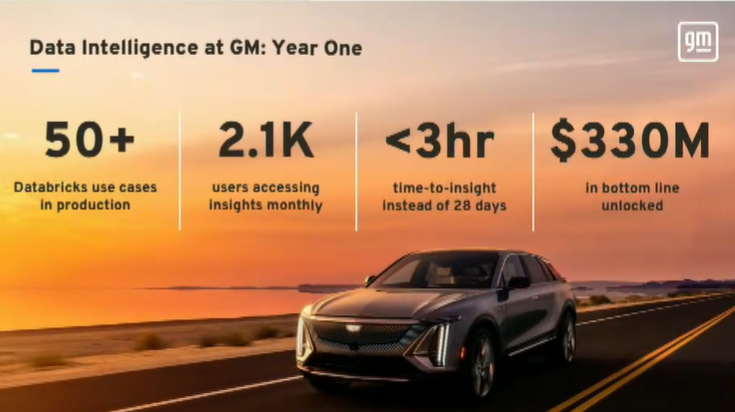Brian Ames, senior manager of production AI and data products at General Motors, said the company has stood up its data factory and plans to layer in generative AI capabilities in the next year.
Ames' talk at the Databricks Summit conference is one part of a broader effort at GM to improve its data and software game. In February, GM CEO Mary Barra said the company is "determined to get the software right" to deliver good customer experiences. GM is working to improve its software in autos as well as revamp the technology behind Cruise.
In May at an investor conference, Barra noted that artificial intelligence will be critical to Cruise and the company overall. "When you talk about artificial intelligence, the ultimate application of that is autonomy is our Cruise operations that use machine learning and AI. But there's a lot that we're working on to leverage AI in some of the business processes to take cost and complexity out of what we do," said Barra.
With that backdrop, Ames' talk highlighted how companies need to get their cloud and data strategies right before embarking on generative AI. We've documented this trend repeatedly in customer stories on CVS, Wayfair, Equifax, Intuit, Rocket and JPMorgan Chase to name a few.
- Intuit sees 'green shoots' from its generative AI strategy
- Rocket Companies’ genAI strategy: Playing both the short and the long game
- How Verizon buckets its AI, genAI use cases
- Equifax bets on Google Cloud Vertex AI to speed up model, scores, data ingestion
- JPMorgan Chase CEO Dimon: AI projects pay for themselves, private cloud buildout critical
-
Medtronic aims to leverage medical device data for AI-enabled care
Ames said GM's first move was to create an infrastructure that could surface data more easily. "GM has a ton of data. That's not the problem. We had a beautiful on prem infrastructure. Why change? Well, two reasons. Number one was data efficiency. More importantly, the world changed. And GM understood that if we didn't have AI and ML in our arsenal, we could find ourselves at a competitive disadvantage," he said.
GM set out to transform its data infrastructure about 15 months ago to go all cloud. The plan was to build a data insight factory that could democratize information that can be used for safety and vehicle telemetry. "We needed to move from solution silos to single sources of truth with rapid collaboration. We needed to move away from fragmented governance into a simple unified governance. And we felt if we did those two things extremely well, that we'd be able to go from pockets of limited AI and ML execution to really building AI and ML into the DNA of GM," said Ames.

Today, GM has this architecture built on Databricks. GM also built an interface that can distribute insights by brand and product. The killer app for this data platform has been telemetry data from GMs fleet to be used to gauge the health of the autos on the road as well as predictive maintenance and safety. The fleet includes 10s of millions of cars with multiple combination of sensors. The goal? Zero crashes.

Going forward, Ames said GM's plan is to break down silos for various AI and machine learning projects around the company and move them to production faster. "we're reducing the time to insight and we're finding ways to contribute value. In year two, we're going to layer on genAI and perhaps take another step at GM towards our mission of zero crashes," said Ames.
More:
- AI infrastructure is the new innovation hotbed with smartphone-like release cadence
- Don't forget the non-technical, human costs to generative AI projects
- GenAI boom eludes enterprise software...for now
- The real reason Windows AI PCs will be interesting
- Copilot, genAI agent implementations are about to get complicated
- Generative AI spending will move beyond the IT budget
- Enterprises Must Now Cultivate a Capable and Diverse AI Model Garden
- Secrets to a Successful AI Strategy
- Return on Transformation Investments (RTI)
- Financial services firms see genAI use cases leading to efficiency boom


